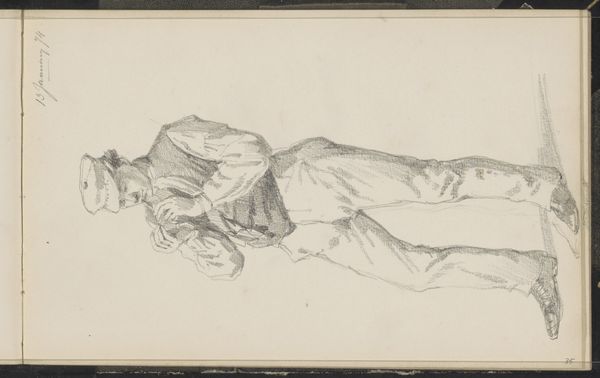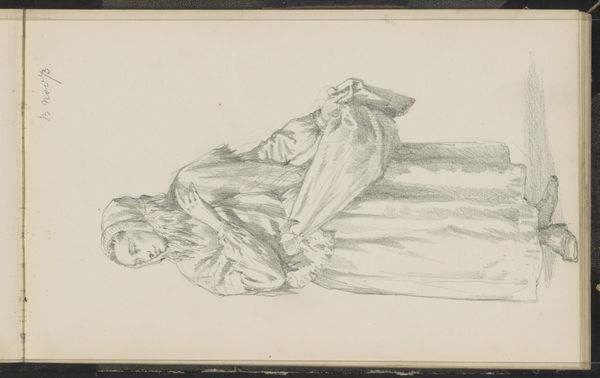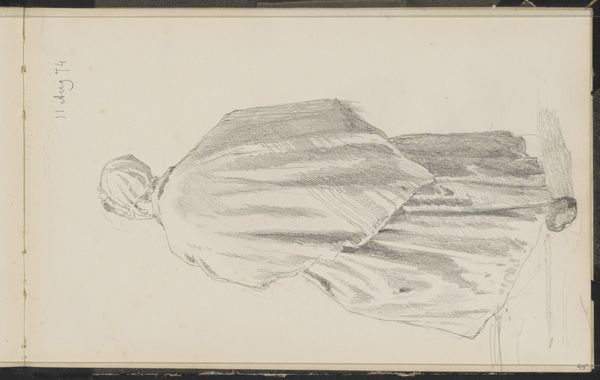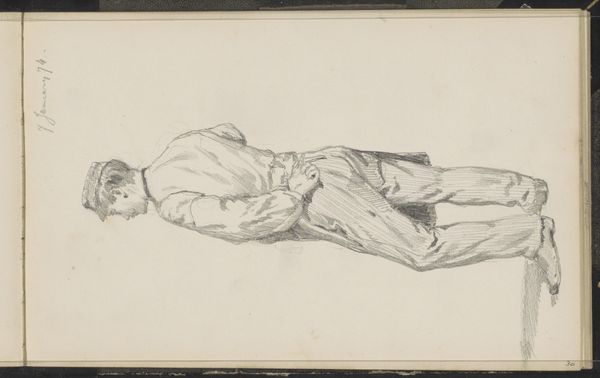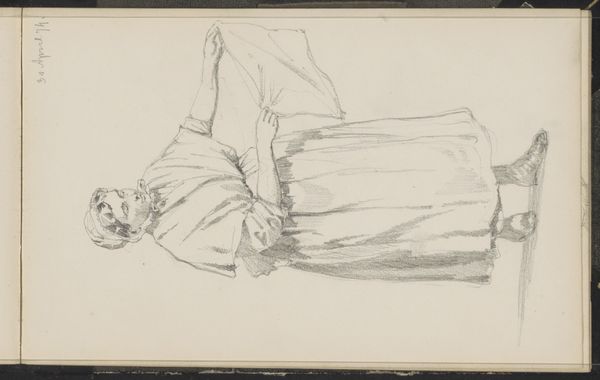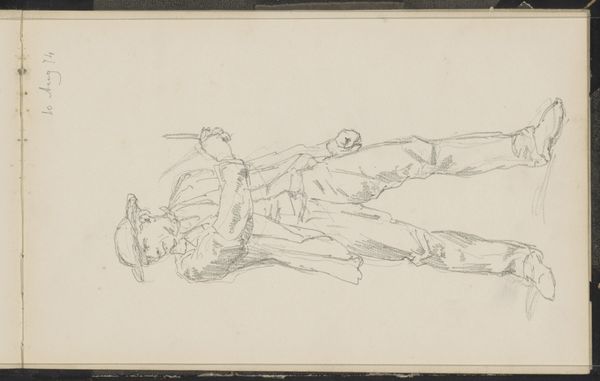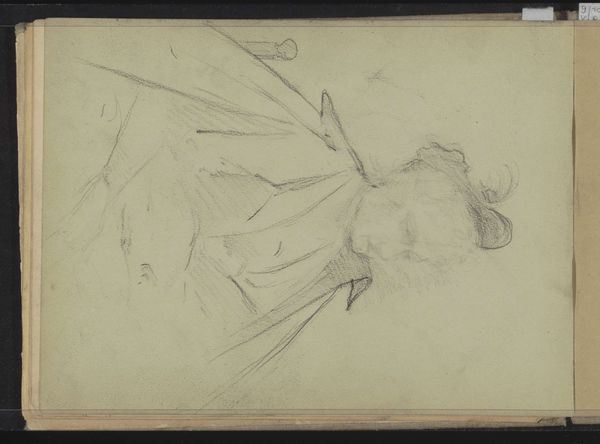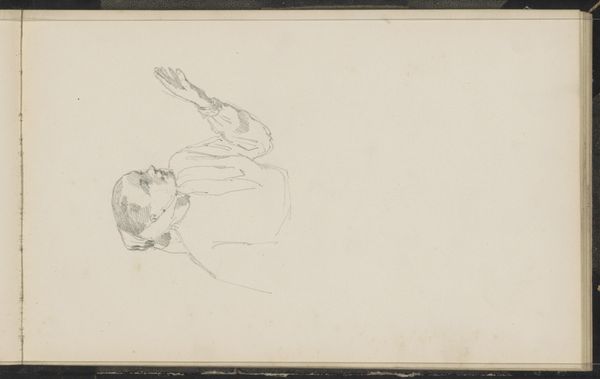
drawing, pencil
#
portrait
#
drawing
#
light pencil work
#
pen sketch
#
sketch
#
pencil
#
sketchbook drawing
#
realism
Copyright: Rijks Museum: Open Domain
Editor: We’re looking at “Leunende man,” or “Reclining Man,” a pencil drawing, possibly from 1874, by Cornelis Springer. The pose feels really relaxed, almost nonchalant. What do you see in this piece beyond just a simple sketch? Curator: I see a study in class and labor during a time of significant social upheaval. Consider the man's clothing. It suggests a working-class identity, perhaps even a sailor. Springer, known for his architectural paintings of affluent cityscapes, here turns his attention to an individual. Why? What does it signify when an artist accustomed to portraying the powerful focuses on someone far less so? Editor: That's interesting. I hadn't really considered that it might be a deliberate choice on Springer’s part to depict someone from a different social class. Curator: Precisely. What does it mean for a working-class individual to be “reclining” in this pose? Think about who historically has had the privilege of leisure. Does the artwork serve to normalise or critique the man’s relaxed state, and if so, what would Springer’s motivations have been for conveying such message? It could be that he’s using realism to create empathy, but it's equally plausible that the intended purpose was in fact the complete opposite. Editor: So you're saying that Springer’s typical subject matter makes this particular sketch more politically charged? Curator: Exactly! It invites us to question the dynamics between the classes and consider Springer’s possible commentary. What stories might Springer have been trying to tell about a rapidly changing world? What aspects of those messages are lost to history? Editor: That gives me a lot to think about. It really changes how I see this drawing. Thanks! Curator: Indeed. Context transforms art, and in turn art transforms context. It shows how important these questions of representation are, then and now.
Comments
No comments
Be the first to comment and join the conversation on the ultimate creative platform.
